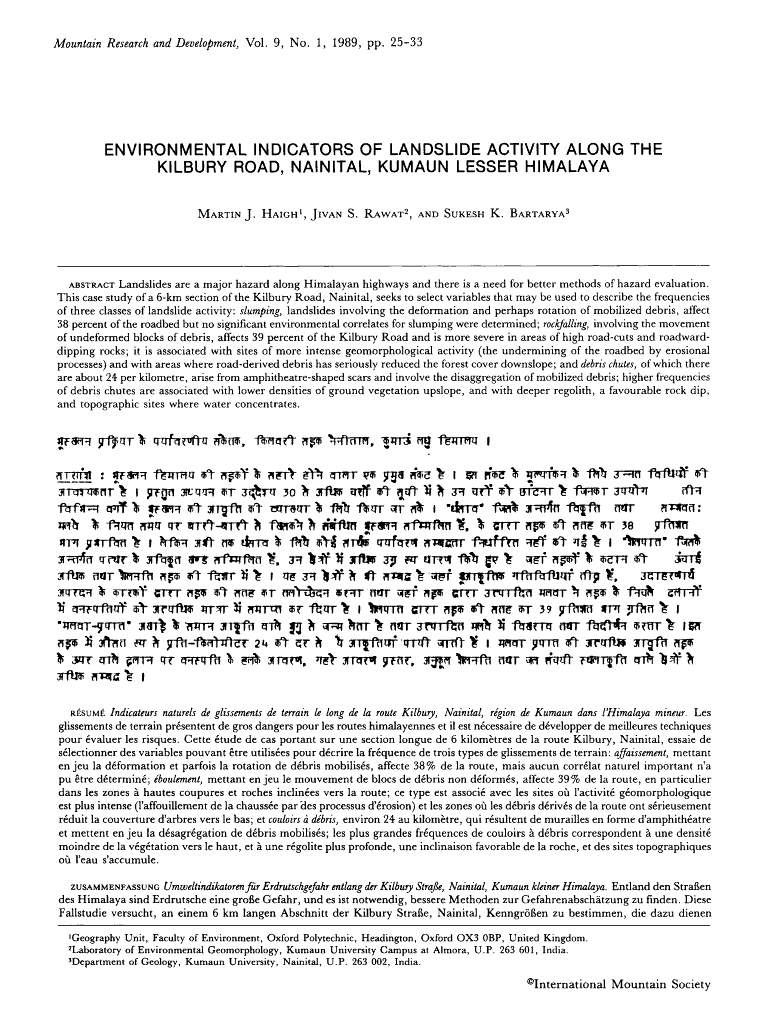
Landslides are a major hazard along Himalayan highways and there is a need for better methods of hazard evaluation. This case study of a 6-km section of the Kilbury Road, Nainital, seeks to select variables that may be used to describe the frequencies of three classes of landslide activity: slumping, landslides involving the deformation and perhaps rotation of mobilized debris, affect 38 percent of the roadbed but no significant environmental correlates for slumping were determined; rockfalling, involving the movement of undeformed blocks of debris, affects 39 percent of the Kilbury Road and is more severe in areas of high road-cuts and roadward-dipping rocks; it is associated with sites of more intense geomorphological activity (the undermining of the roadbed by erosional processes) and with areas where road-derived debris has seriously reduced the forest cover downslope; and debris chutes, of which there are about 24 per kilometre, arise from amphitheatre-shaped scars and involve the disaggregation of mobilized debris; higher frequencies of debris chutes are associated with lower densities of ground vegetation upslope, and with deeper regolith, a favourable rock dip, and topographic sites where water concentrates.